Intro
As EV adoption accelerates, utilities have a pivotal opportunity to establish themselves as trusted partners in the electrification journey. To manage grid impact and promote sustainable charging behavior, they must guide customers through charger selection, enrollment in TOU and managed charging programs, and long-term EV engagement.
I designed the NGAGE EV experience to support this transformation—creating a seamless, responsive, and user-centered journey tailored to both new and returning EV owners. The platform simplifies complex decisions through clear UX patterns, contextual education, and dynamic personalization. Informed by user research and iterative testing, every screen and interaction was crafted to reduce friction, build trust, and drive program participation across residential and commercial segments.
The problem
EV adoption is rising, but many customers feel overwhelmed by the complexity of choosing chargers, understanding utility programs, and navigating incentives. At the same time, utilities struggle to engage users early in the EV journey and promote behaviors that reduce grid strain. Without a centralized, user-friendly platform, both sides miss the opportunity for smarter, more sustainable EV adoption.
The goal
Create a configurable, utility-branded platform that guides customers through their EV journey with tools like charger and vehicle comparison, cost calculators, dealer and charger maps, and program enrollment—all in a responsive, user-friendly experience.
My role
I led the end-to-end UX process—partnering with product and sales teams to uncover user insights, define scope, collaborate with cross-functional stakeholders, and deliver high-fidelity designs.
Business requirements
The platform must serve two core audiences:
- Prospective EV buyers, by providing education, vehicle comparisons, cost calculators, and guidance on chargers and available incentives—supporting confident, utility-aligned adoption decisions.
- Existing EV owners, by helping them discover rebates, enroll in managed charging or TOU rate plans, and maximize long-term savings.
Competitor research

Study Format:
Participants completed task-based activities remotely, with both screen and audio recorded. Post-task and post-test surveys captured their feedback on usability, comprehension, and overall experience.
Key Metrics Collected:
- Task Performance: Ability to complete core actions like vehicle comparison or incentive lookup
- Content Comprehension: Clarity of pricing, ownership costs, and program eligibility
- Overall Site Usability: Ease of navigation, layout logic, and satisfaction
✅ What Worked Well (Strengths)
- Cost Comparisons Were a Key Strength
- Charger Finder Tools Were Generally Useful
- Vehicle Research Was Simplified in Some Cases
- Landing Pages Framed the Value Proposition Well
⚠️ What Didn’t Work (Pain Points)
- Clunky or Confusing Interactions
- Lack of Deep Vehicle Comparison
- Incentives & Rate Plan Info Confused Users
- Charger Tools Sometimes Too Simplified or Hidden
Design Implications for Your EV Platform:
- Clarity and structure are key—pre-fill tools with defaults and clearly separate cost, rate, and incentive data.
- Support side-by-side comparison with relevant gas vs. EV specs.
- Surface charging tools early, with map-based and filterable views.
- Provide trust-building context for pricing, scores, and savings estimates with tooltips or quick explainers.
User research
To understand the needs of both EV buyers and current owners, I reviewed multiple government and private sector sources, including utility EV portals, DOE’s Vehicle Cost Calculator, Edmunds True Cost to Own, and utility program finders such as PG&E and PlugStar. I also conducted interviews with users in early EV consideration, current EV owners, and internal stakeholders. A key insight emerged: users need clarity on long-term cost savings and easier access to personalized incentives based on where they live.
Key user pain points
- Unclear Long-Term Cost Savings Users want to know: “How much will I really save with an EV vs. a gas vehicle over 5 years?” Most online tools are overly technical or require detailed data entry, leading to abandonment.
- Scattered Incentive Information Current EV owners struggle to find a centralized source that lists all available local, state, and federal rebates or time-sensitive programs they might qualify for.
- Generic Recommendations Many EV tools offer one-size-fits-all advice, which users find irrelevant. People want recommendations tailored to their zip code, utility provider, and driving habits.
- Lack of Ongoing Engagement Once a vehicle is purchased, there’s little digital follow-up or support. Users feel abandoned, unsure how to stay connected to programs, upgrade options, or charger discounts.
Persona

Emily – The Empowered EV Owner
Age: 32
Occupation: Marketing Manager
Education: Bachelor’s Degree
Behavior:
- Drives her EV daily and charges it overnight at home
- Actively seeks new programs and technologies to reduce costs and emissions
- Tech-savvy and comfortable with online tools and platforms
- Engages in research on sustainability and EV best practices
Goals:
- Connect with other EV users and share experiences
- Maximize savings through local utility programs and incentives
- Stay informed about emerging EV technologies and energy-saving tips
- Reduce her carbon footprint and make sustainable choices

Emma – The Curious EV Shopper
Age: 28
Occupation: Product Manager
Education: Bachelor’s Degree
Behavior:
- Actively researching whether an EV suits her lifestyle
- Comparing EV models, pricing, and long-term cost of ownership
- Interested in understanding rebates, charger requirements, and savings
- Seeks trustworthy tools and educational content to guide her decision
Goals:
- Gain confidence before committing to an EV purchase
- Learn the real cost difference between EVs and gas cars over time
- Discover incentives and programs relevant to her location
- Choose a vehicle that fits her budget, commute, and sustainability values
User journey map
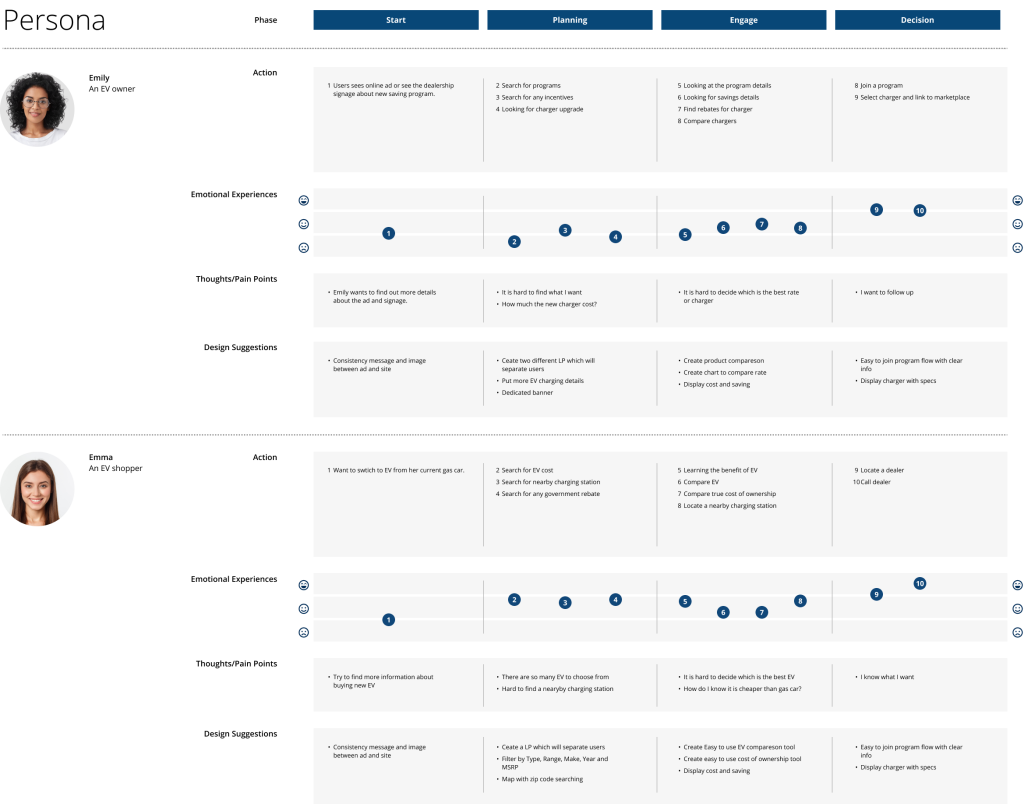
Wireframes
All screens were designed for layout consistency, accessibility, and intuitive interaction across mobile, tablet, and desktop. The responsive wireframes prioritize core functionality and information hierarchy at every breakpoint.
Goals:
- Ensure seamless user experience across devices
- Support content flexibility without compromising clarity
- Optimize for both exploration and task completion
- Align with the utility’s design system for future scalability
These wireframes mapped each step of the EV journey—from research and comparison to charger setup and post-purchase engagement. The design emphasized reducing user friction, surfacing incentives, and aligning with utility program goals across devices.

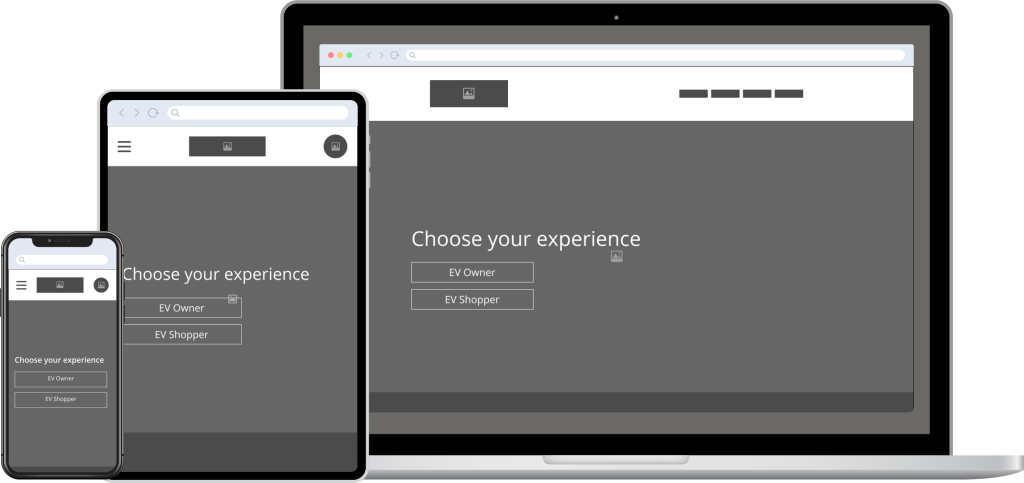
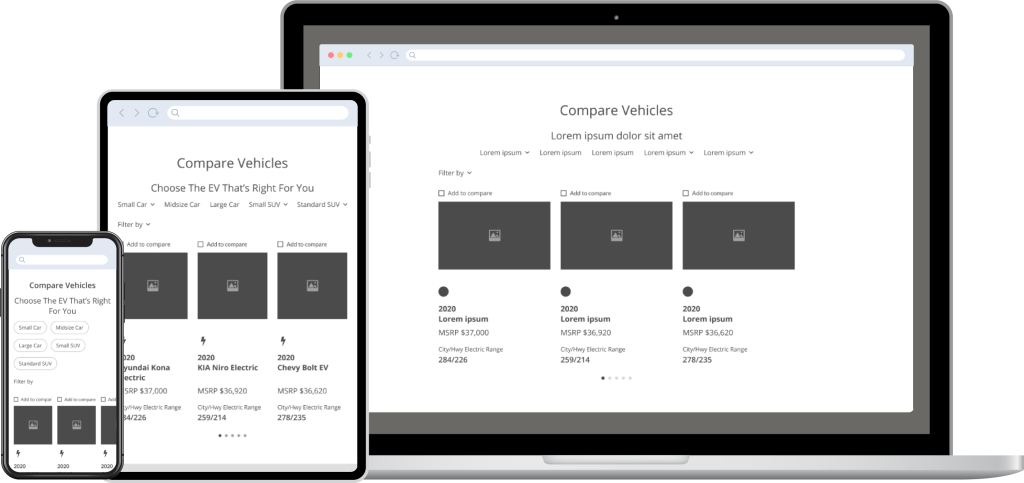
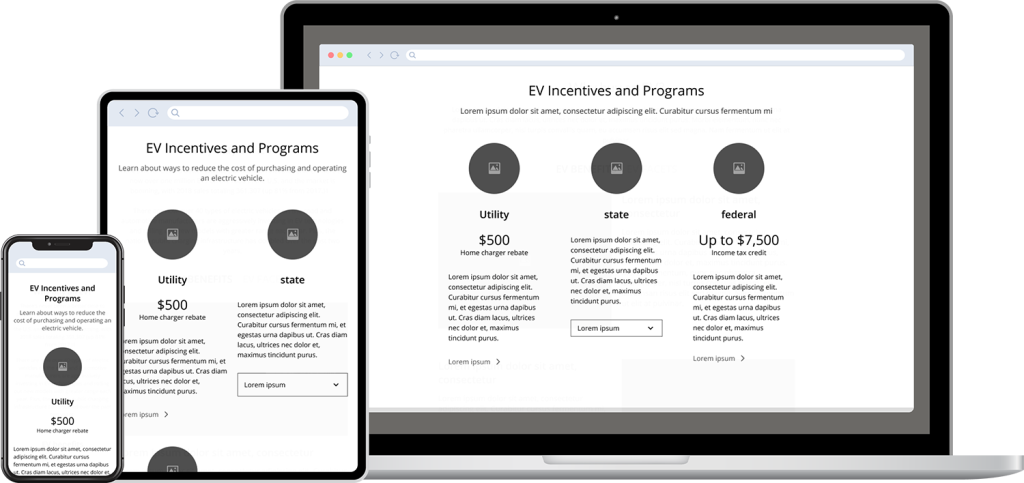
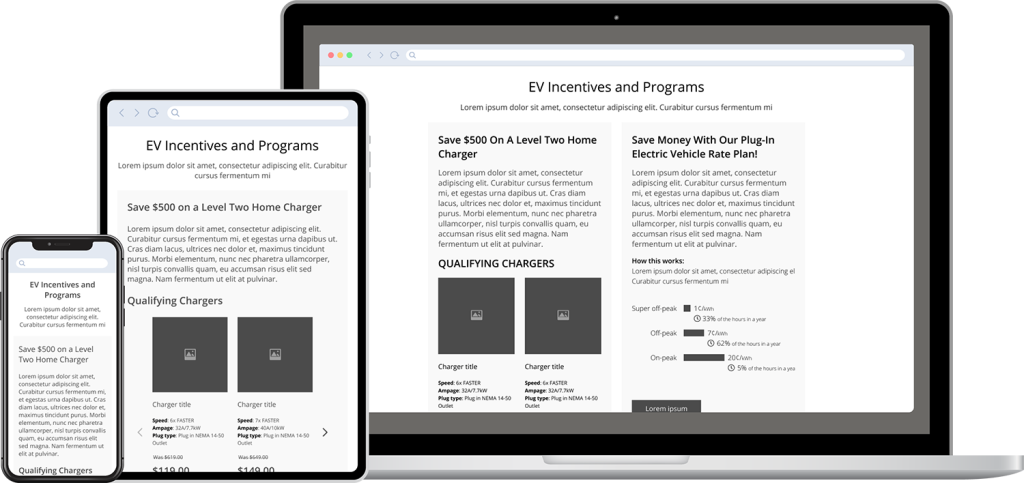
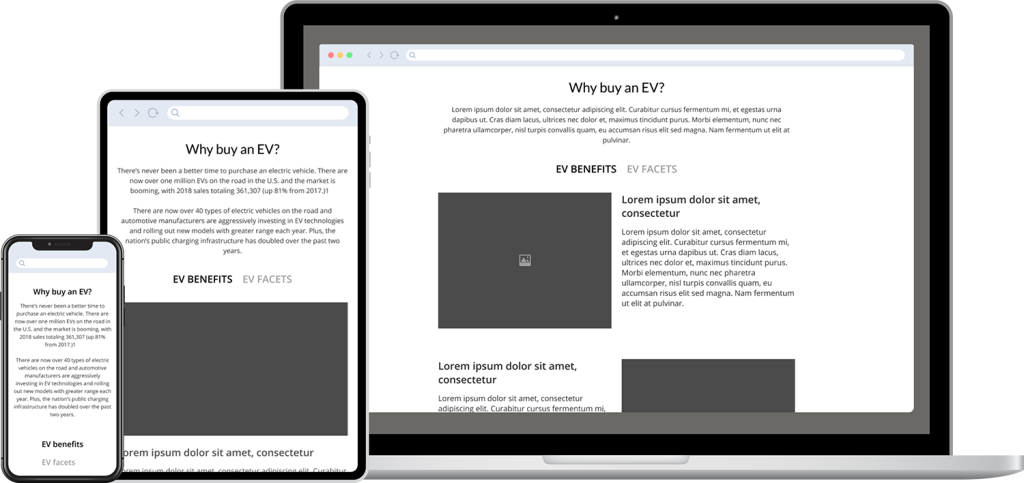
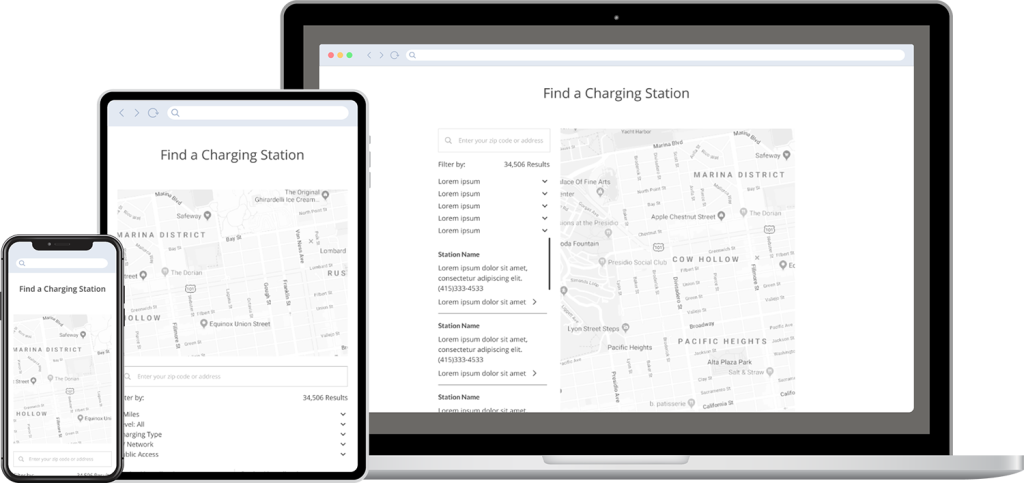
Calculator usability study
To validate the effectiveness of the EV calculator and supporting tools, we conducted remote usability testing with a mix of EV owners and shoppers. Sessions focused on task clarity, information comprehension, and perceived value—particularly in comparing EV vs. gas vehicle costs.
Key Findings:
- Users were confused by ownership toggles and cost breakdowns
- Participants wanted clearer year-based ownership cost summaries
- Layout issues made it difficult to distinguish between vehicles during side-by-side comparison
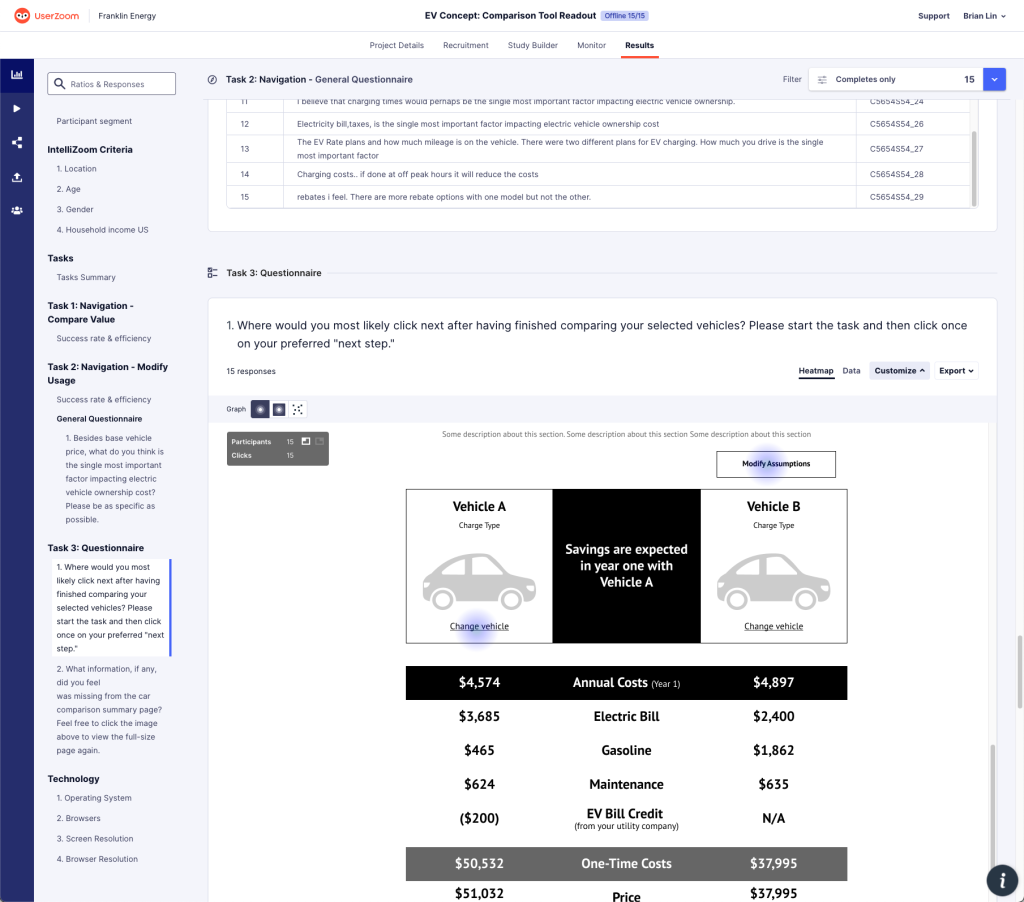
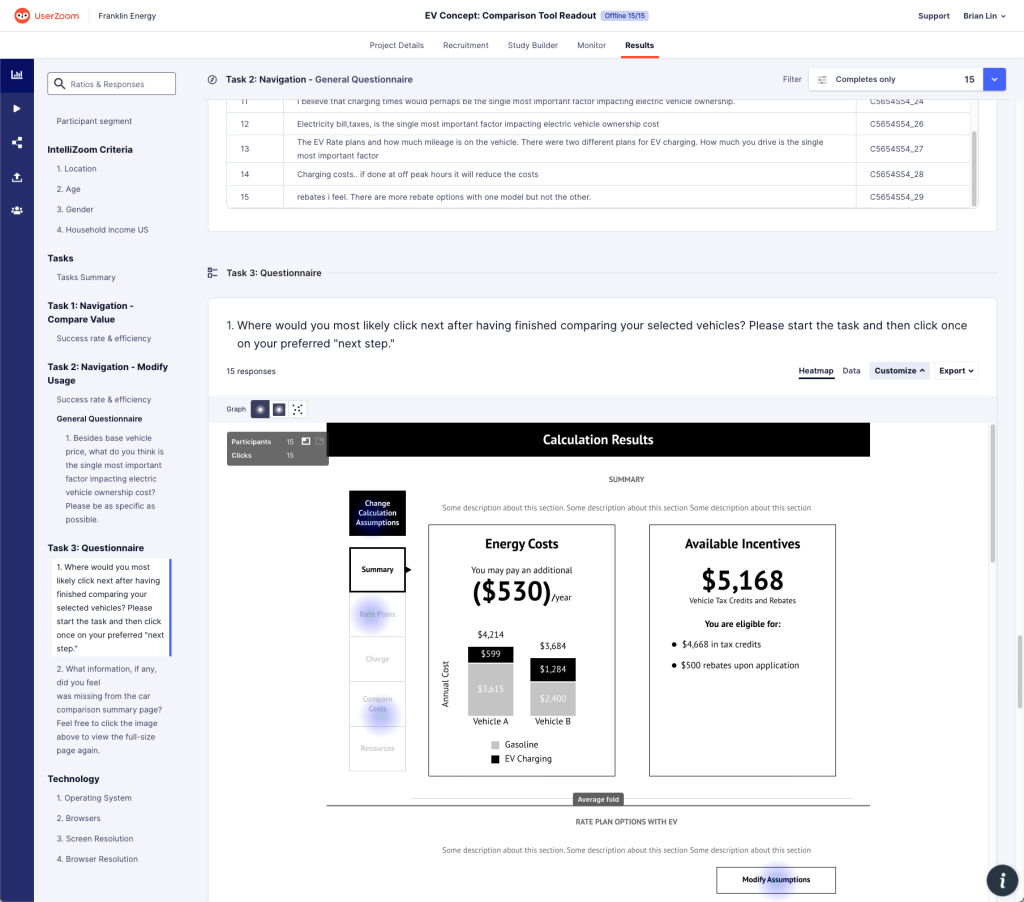
“What was missing from the summary page was the math. Show me different numbers of years of ownership.”
— EV Owner
Outcome
Based on the feedback, I redesigned the EV calculator experience to help users more easily compare vehicles, understand long-term ownership costs, and discover applicable incentives. A modular design system ensured the UI could scale efficiently and be quickly rebranded for utility clients.
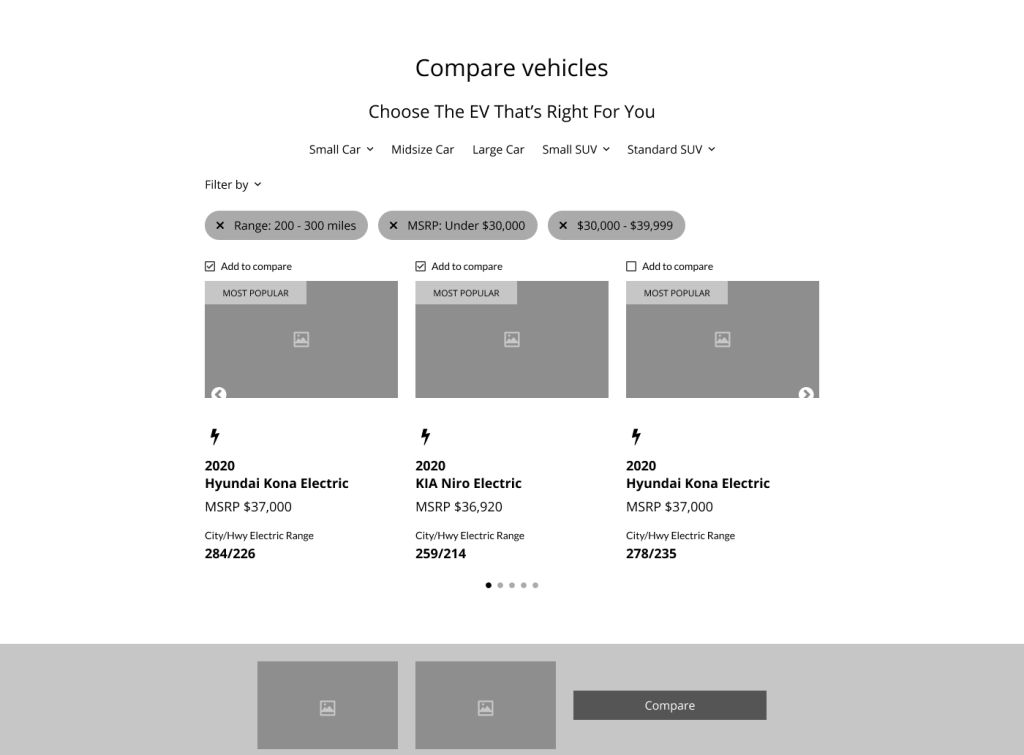
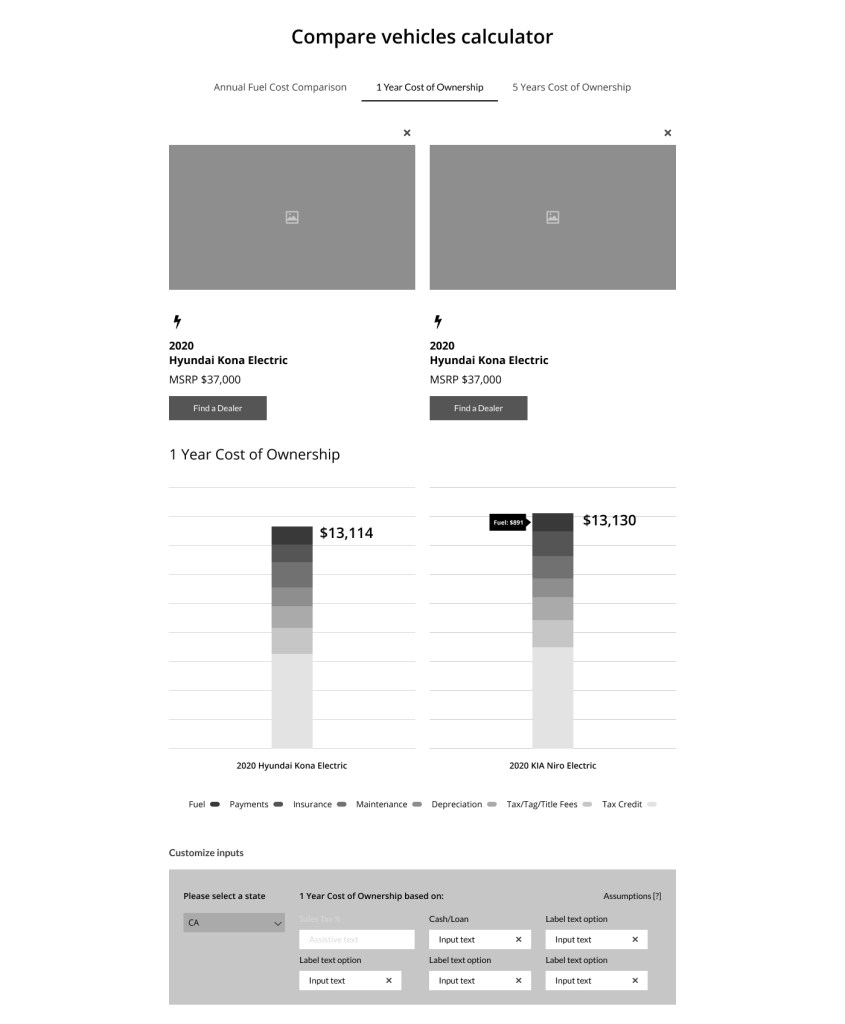
High-fidelity designs
The final UI balanced clarity and credibility with a modern aesthetic—highlighting financial incentives, promoting utility programs, and reducing friction at key decision points.
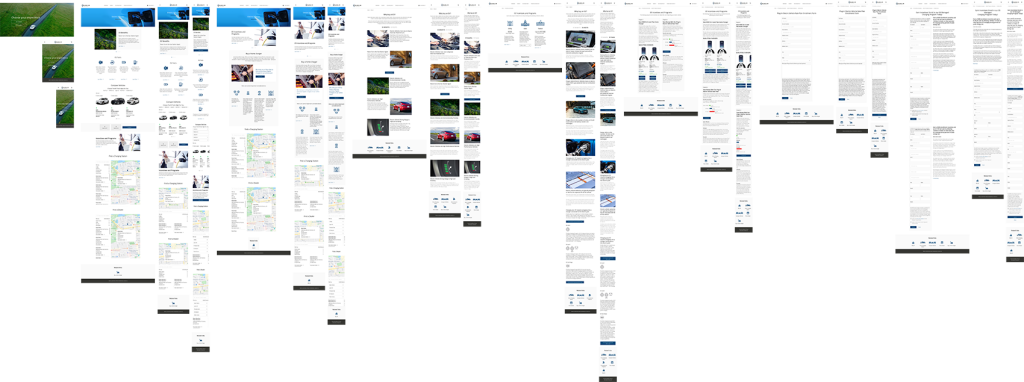
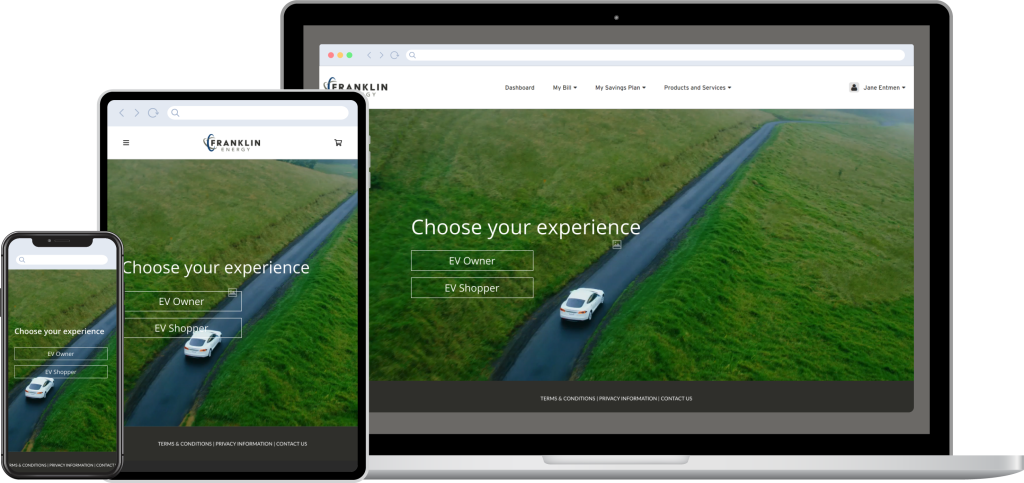
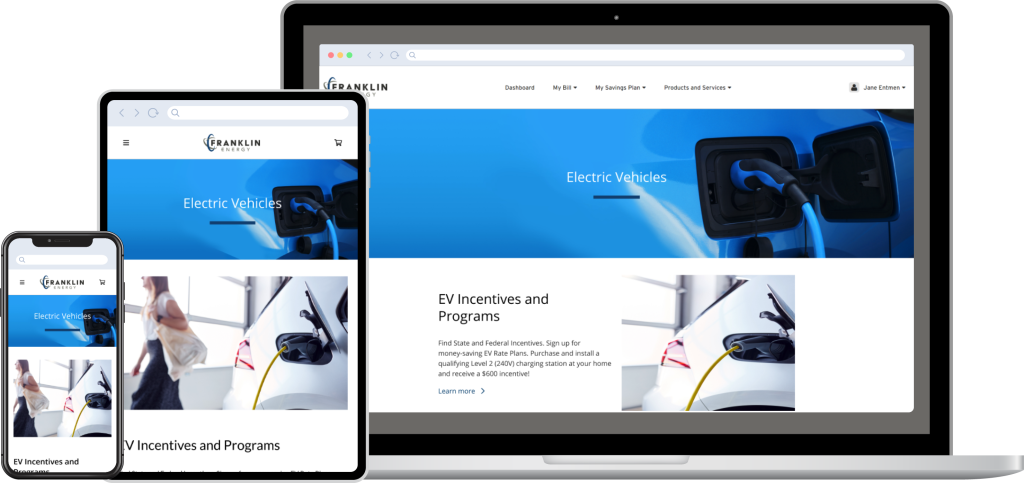
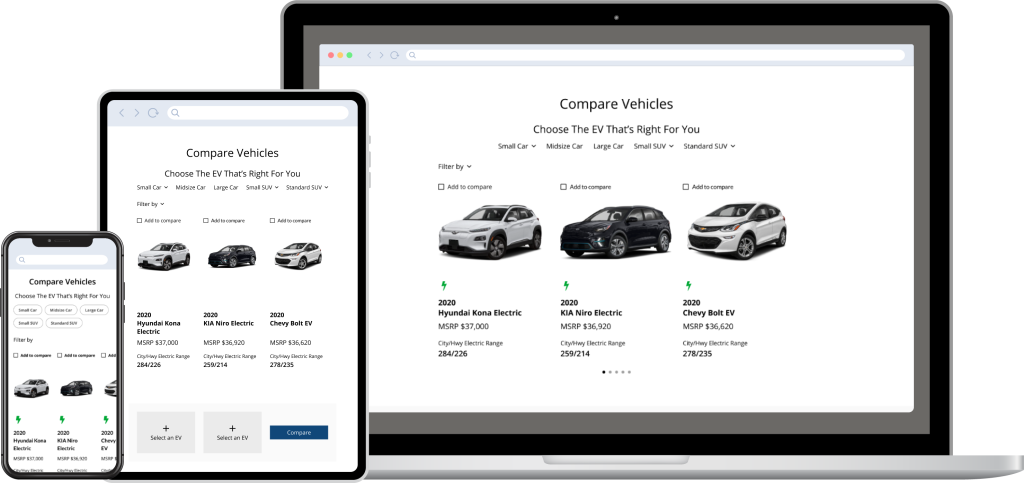
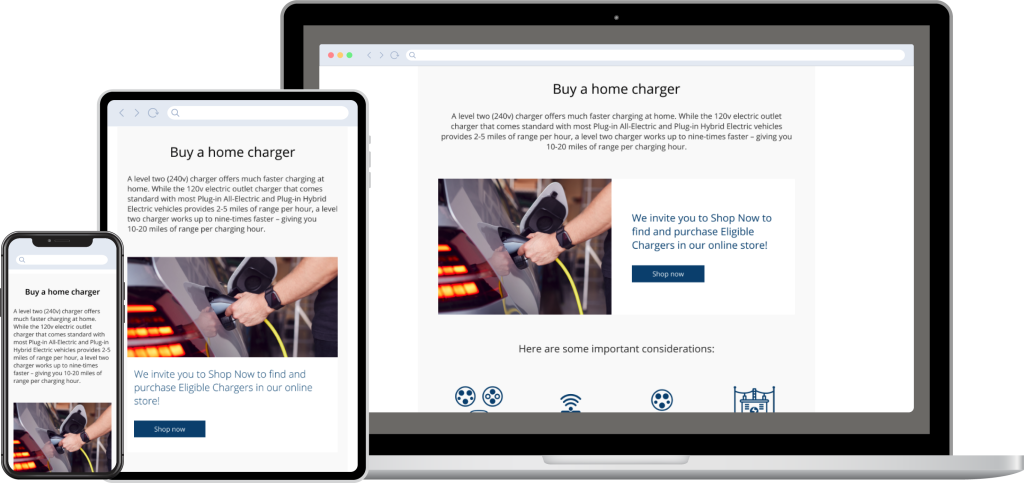
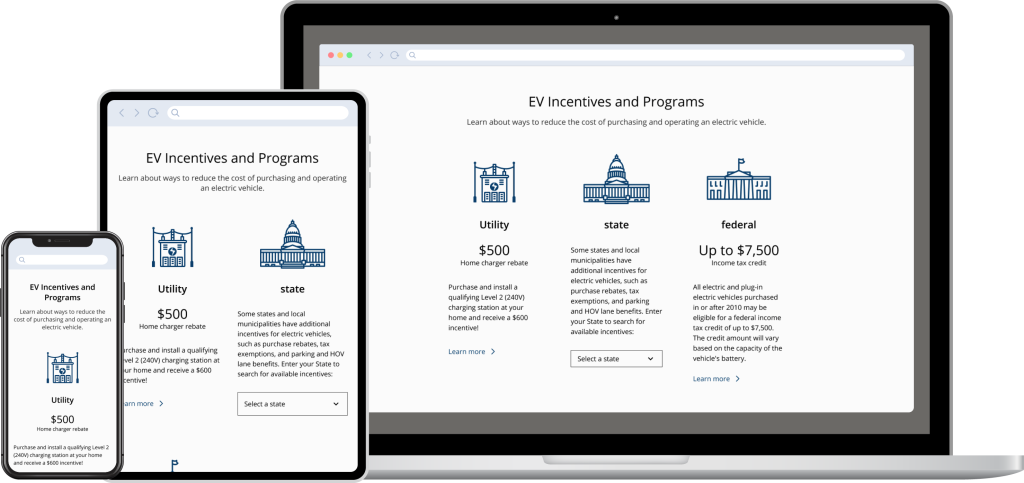
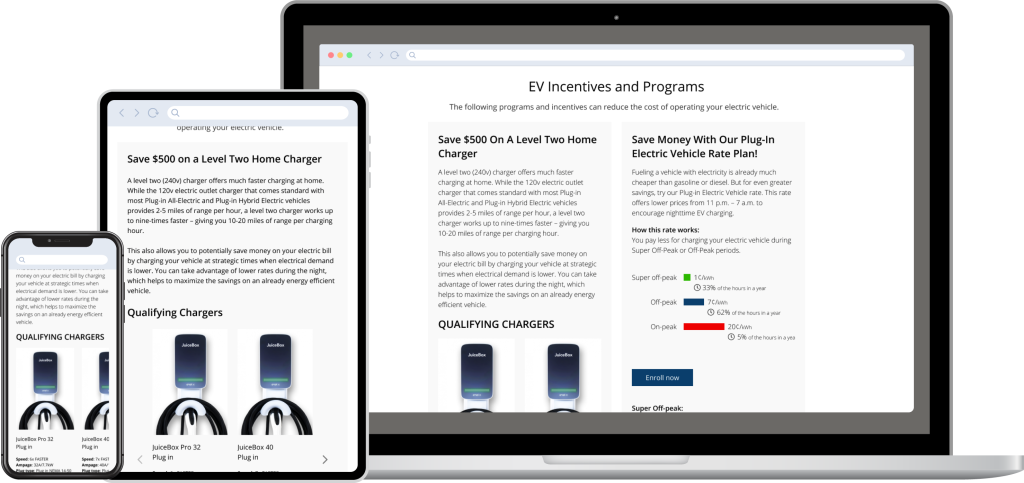
Outcome
I successfully simplified a complex decision-making process for both prospective and current EV users. Shoppers could easily compare vehicles, estimate ownership costs, and explore local programs with clarity and confidence, while existing EV owners were able to identify new incentives and optimize their charging behavior.
For utilities, the modular and configurable design enabled rapid deployment and rebranding, supporting their role as trusted energy advisors. By offering a unified digital experience aligned with goals outlined in Franklin Energy’s Transportation Electrification strategy, the platform helped utilities:
- Boost enrollment in managed charging and TOU rate plans
- Promote responsible charging behaviors
- Increase program visibility and customer satisfaction
- Streamline customer onboarding across residential and commercial segments
